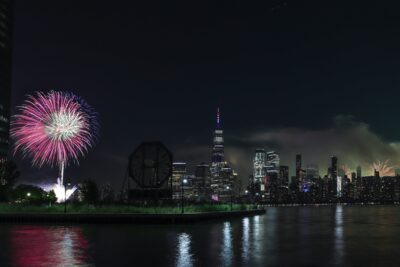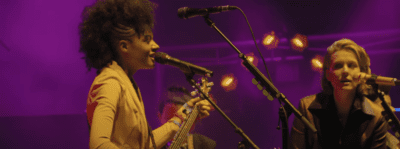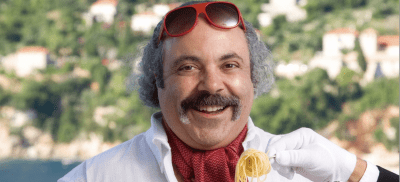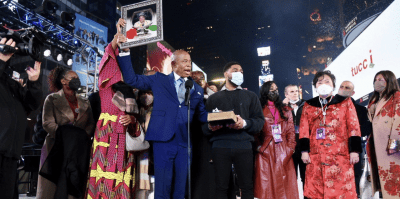‘Biggie: I Got A Story To Tell’ reveals new truths about the iconic rapper
The new Netflix doc about Notorious B.I.G. relies heavily on never-before-seen home video footage and has the blessing of his estate
“Biggie: I Got A Story To Tell” is a new Netflix documentary, out March 1, that aims to tell the definitive story of the Brooklyn rapper’s origin story. There’s no shortage of documentaries and movies about Biggie but this is the only documentary approved by Biggie’s estate and it does reveal a side of his story that fans didn’t know until now: The project features previously unseen home movies shot by Biggie’s friend Damion “D-Roc” Butler with exclusive archival interviews with Christopher Wallace himself (also known as The Notorious B.I.G., or Biggie Smalls, or Big Poppa, etc.), as well as new conversations with his mother Voletta Wallace, Sean “Diddy” Combs and more.
Brooklyn Magazine sat down director Emmett Malloy and Biggie’s estate manager Wayne Barrow over Zoom to ask why this felt like the right time to share Biggie’s story—and why Malloy, most notably to date a frequent Vampire Weekend video collaborator, was the man for the job. They explain why the documentary is different from other Biggie projects (mostly thanks to D-Roc’s footage), and how a bebop drum solo reveals what was so special about Biggie’s rhyming style.
The conversation has been edited for flow and clarity.
Why tell Biggie’s story now?
Wayne Barrow: We’re almost 25 years since his death. This being the first and only true documentary coming from his family, as far as his estate is concerned, it was good that we told it now and push his legacy to a place where it’s visible globally.
What does the documentary cover that the 2009 movie “Notorious” didn’t?
Emmett Malloy: My pitch to Wayne and Ms. Wallace was, “Let’s make a film that celebrates Christopher’s life, rather than focus on his death.” That was the lane that I traveled down when making this film.
What did it mean to you to gain access to the footage D-Roc shot behind the scenes with Biggie?
Malloy: Our goal was to bring Big to life for people and how could I do that with just stories? The footage gave me the ability to do that. There was lots of new information I learned about Biggie by visiting his grandmother in Jamaica and his relationship with jazz musician Donald Harrison [and from details] I picked up through my conversations with Ms. Wallace. But Wayne said from the beginning I would have to work hard to gain D-Roc’s trust. I remember when we started this film in Jamaica, I posted a picture of me talking to Big’s grandma, and D-Roc hit me out of nowhere and said, “Man, the fact that you went and interviewed his grandmother lets me know you’re on the right path.”
Barrow: D-Roc captured almost every movement in the early days. Some of the footage had been used in the past, but this is as much about his life as it is Big’s. They were on the road having the same experiences together.
The last 30 minutes of your documentary is the part of Biggie’s story we’ve heard over and over, so his back story feels fresh and new. What kept Biggie’s beginnings in the shadows for so long?
Barrow: D-Roc was very, very cautious of who he’d show it to. He just kept it under wraps, which was a great thing, because at the end of the day, he put us in a position where we had some jewels that people have never seen before. Especially the scene in the car with the kids, after Biggie bought the house with Ms. Wallace and they broke ground. That moment is a special moment that no one’s ever seen.
How did you keep the documentary moving and energetic when you’re using home videos and talking heads to tell a story?
Malloy: I had a great writer in Sam Sweet. His specialty was always focusing on where Biggie is from and why the neighborhood that he grew up in was so important to the talent and story that they had. We were editing until minutes before we delivered it to Netflix, still crafting the story, still figuring out. But I had the goods on this one. I had the access, and that’s what you struggle with on most films.
When Biggie went to Jamaica as a child, he listened to reggae and even country music. Back in Brooklyn, he was listening to jazz, R&B and visiting MoMA. Will you talk about how these influences came together to make Biggie’s sound?
Barrow: I always classify it as visualizing. Biggie was a visualizer. In a lyric he would give you a vision and make you feel like you were in the room. This rang true in everything that he actually spit as far as rhymes were concerned, his cadences. If you compare that to other rappers who are prominent, I think there’s a good separation between him and a lot based on what his influences were.
Jazz saxophonist Donald Harrison says Biggie’s rhymes are like bebop drum solos. There is a moment where you lay a Max Roach solo over an unreleased rhyme of Biggie’s—and it’s incredible.
Malloy: Donald talked about that and it was something that lit us up. When Donald brought up the Max Roach drum solo, we went right into finding what song we could match it to. We got real microscopic with it because we knew that was an incredible piece of information. It would be new to people, it would let you understand how he came about his artistic voice.
You use an animated map of Biggie’s childhood neighborhood to show how small his world actually was. Was that also a way of getting around having to show what the neighborhood’s like now, which is more gentrified and generic?
Malloy: It was really to really show you the proximity and also show you how little of the world they had seen. We wanted to have the flavor of the Brooklyn they all grew up in. We tried to shoot at old studios, like Charlie’s Calypso city, which is a renowned recording spot that hasn’t changed. When you walk in there, it just feels like it always did.
Why wasn’t Lil’ Kim included in the documentary?
Wayne Barrow: We reached out to Kim a couple of times and from my standpoint, we couldn’t pull it together in time for us to be able to do what needed to be done. Then things started to shift in terms of storytelling. The story focused on those earlier years and at that point, Kim wasn’t a part of it. She didn’t know Big when he was younger.
Biggie was influenced heavily by movies. Now it’s common for rappers to use “Scarface,” “The Godfather,” and blaxploitation film imagery, but it’s Biggie who seems to have been among the first to make those connections in hip-hop.
Malloy: In an interview he talked about how, on the West Coast, they had movies like “Boyz n the Hood” that really showed you what it was like to live out there and live in those neighborhoods. To hear him say that let me know what a cinema freak Biggie was: You feel that all the way back when he talked about seeing “Star Wars” with Donald Harrison back in the day. Those things were really cool to hear and it made you realize what a fan of cinema he was, and it gets you thinking about what might have been if he stayed around a bit longer.
You might also like 


























